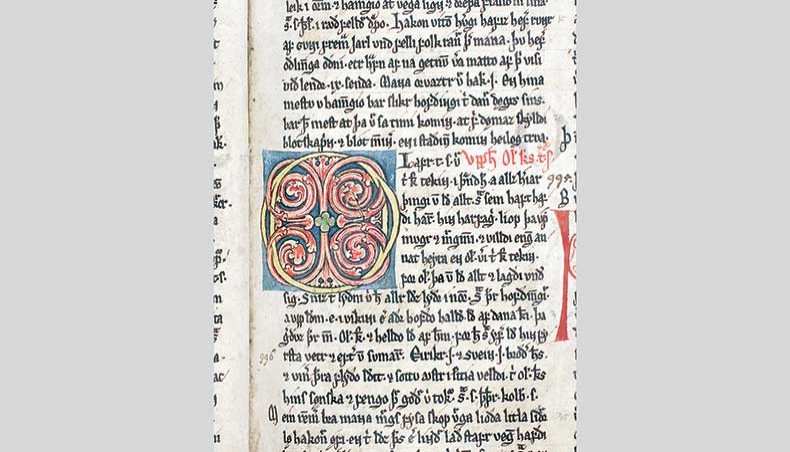Today in our poetry news roundup, we take a look at the clash between Iceland and Denmark over the medieval Icelandic manuscripts written by a poet.
Priceless Manuscripts Cause Clash Between Iceland and Denmark

In June 2009, the University of Copenhagen made photographs of a medieval manuscript hailing from Iceland available to their neighbours. The manuscripts are part of the Arnamagnaean Collection which is housed at the university.
The manuscripts tell of Norse history, Viking raids, gods and kings. The collection is priceless and in the 18th century was bequeathed to the university by one of Iceland’s scholars. Now, Iceland want the manuscripts back.
UNESCO has referred to the Arnamagnaean Collection as

The oldest manuscript is believed to be dated from as far back as the 12th century.
Whilst some of the texts have already been given back to Reykjavik there are still around 1400 which remain in Copenhagen.
A copy of ‘Heimskringla’ which is almost complete and dates from the early 15th century is considered to be the jewel of the collection. ‘Heimskringla’ is the best known of the sagas of the Old Norse Kings and was first written in the 13th century. It was the work of Snorri Sturluson the Icelandic historian and poet.
Whilst many Medieval manuscripts from Iceland are relatively plain, this one is very richly decorated and features beautiful red intricate lettering on every page.
The collection is named for Arni Magnusson a scholar, literature and language expert and historian born in Iceland. He died in Copenhagen in 1730 and this is where his 3000 manuscripts remained. Every document that is borrowed from the collection is insured for the sum of five million kroner (670,000 euros) whilst it is not in the possession of the university.
In order to keep up god relations with Iceland, Denmark agreed to their repeated requests in the 1960s and returned part of the collection. In 1965 a treaty was signed between the two countries that divided the manuscripts up. From 1971 to 1997 over half of the manuscripts were returned to Iceland.
For a number of years, the fact that many of the manuscripts remained in Denmark was not an issue, however, now the culture and education minister for Iceland has demanded that more of the collection be returned. A new institute dedicated to Magnusson is being constructed and it will hold a number of medieval documents for an exhibition. Icelandic officials want to be able to place the collection in its entirety in the institute.
The University of Copenhagen is, however, opposed to the request, claiming the remaining manuscripts form part of the cultural heritage of Denmark. Over the years the University in Copenhagen have cooperated with Iceland and all of the manuscripts have been digitised so that researchers can have access to the materials they contain.
There are however many in Iceland who are in two minds as to whether the manuscripts should be returned or not. They were the property of Magnusson and his property to do with as he wished; giving them to Denmark.


You must register to comment. Log in or Register.